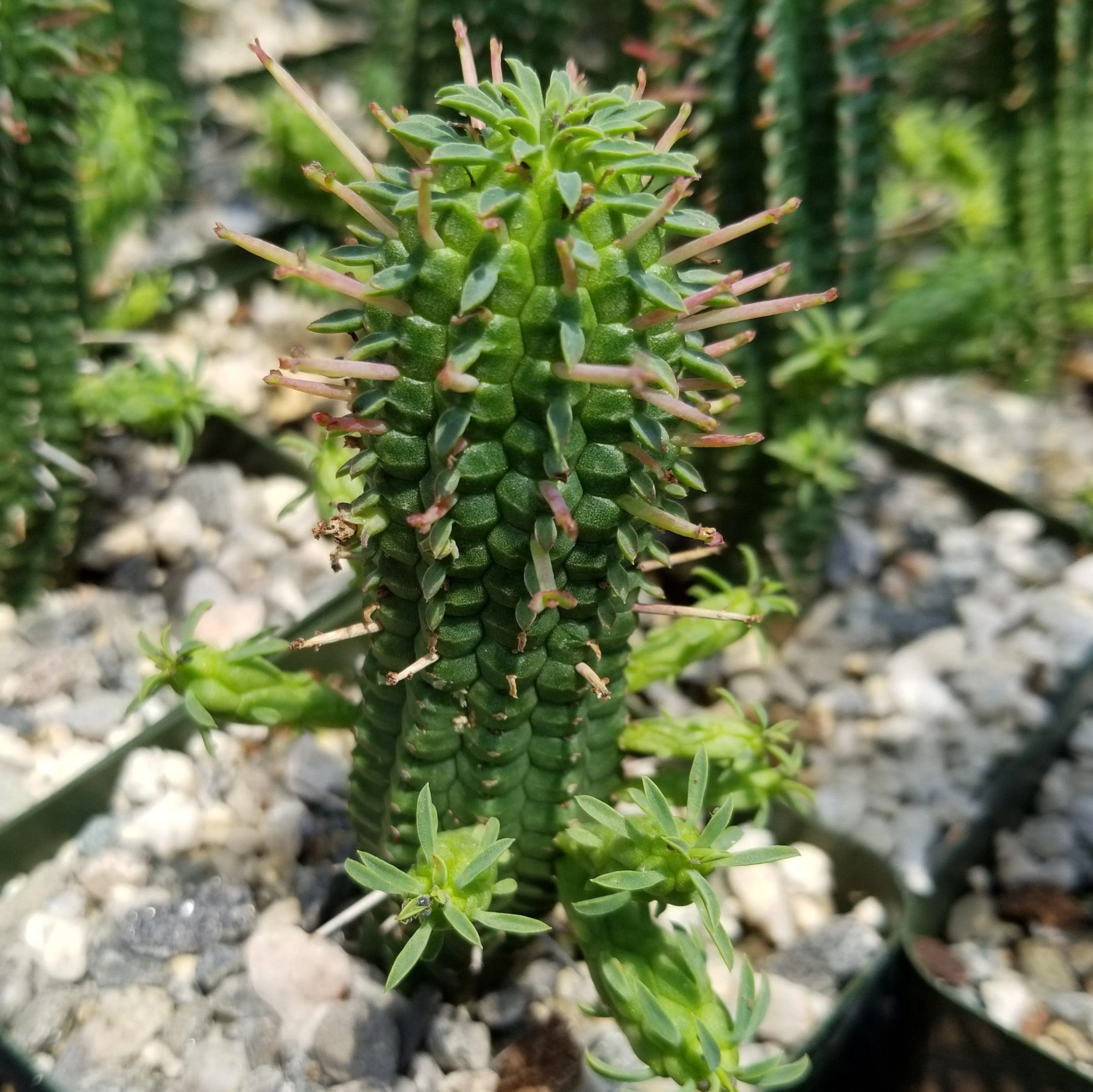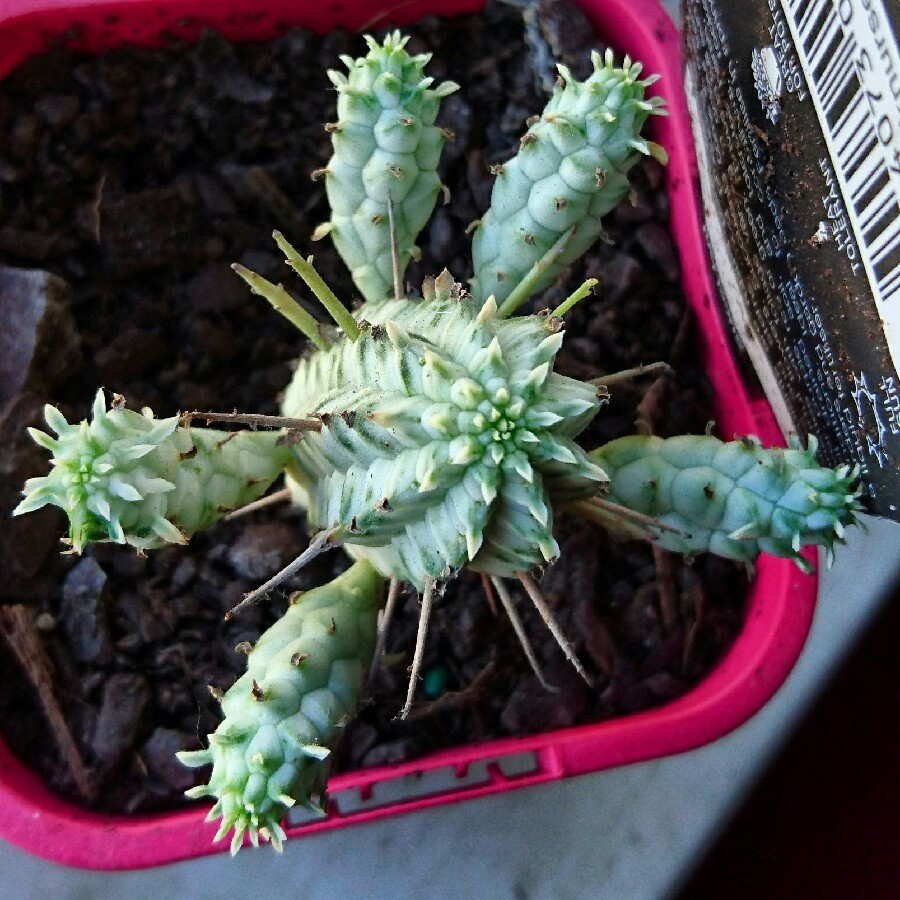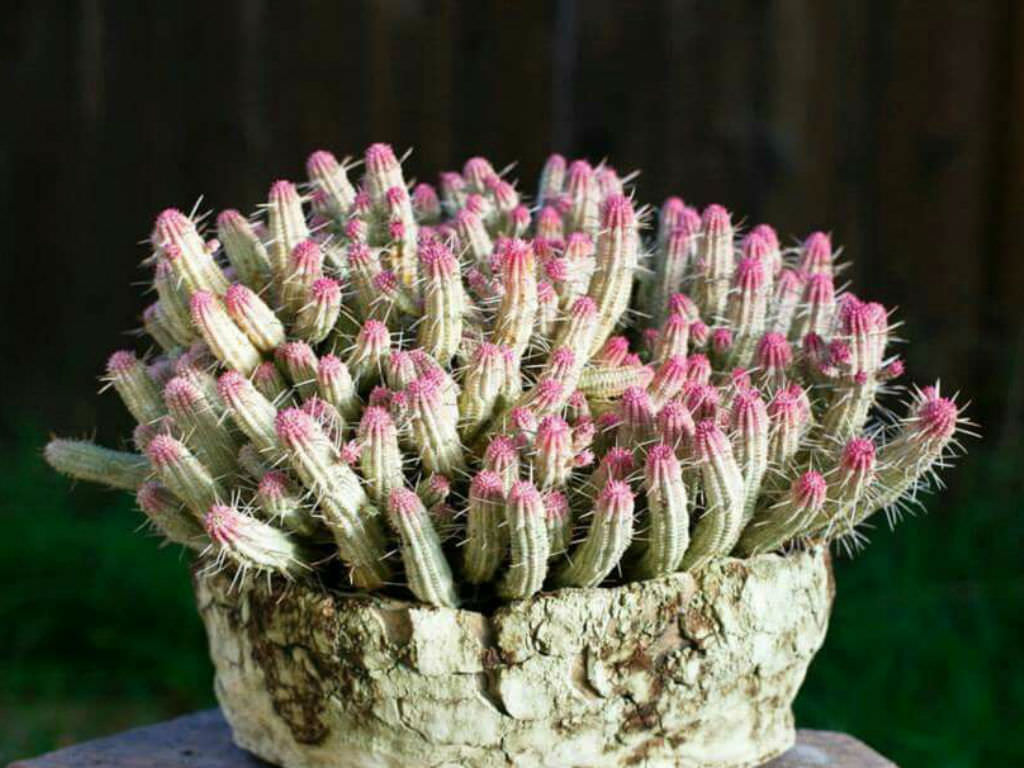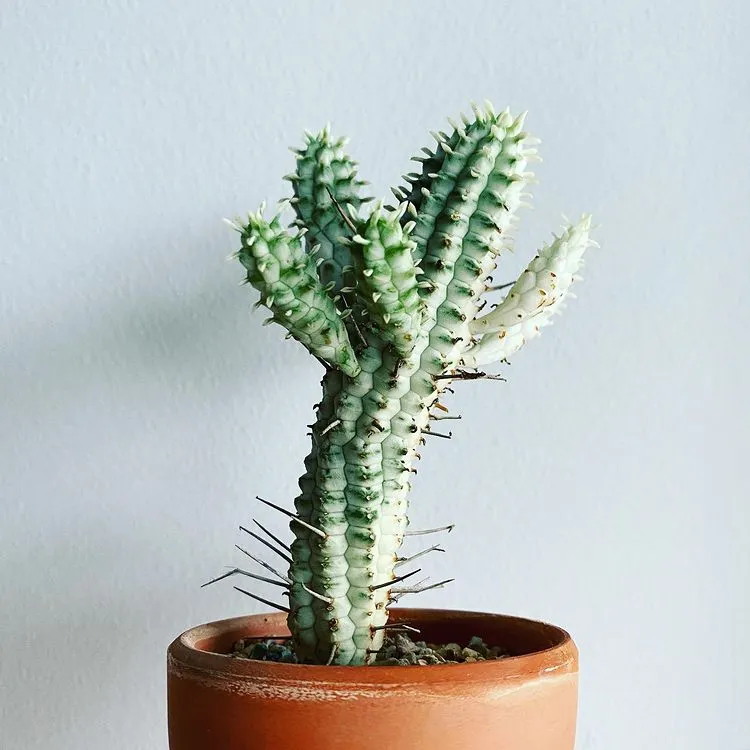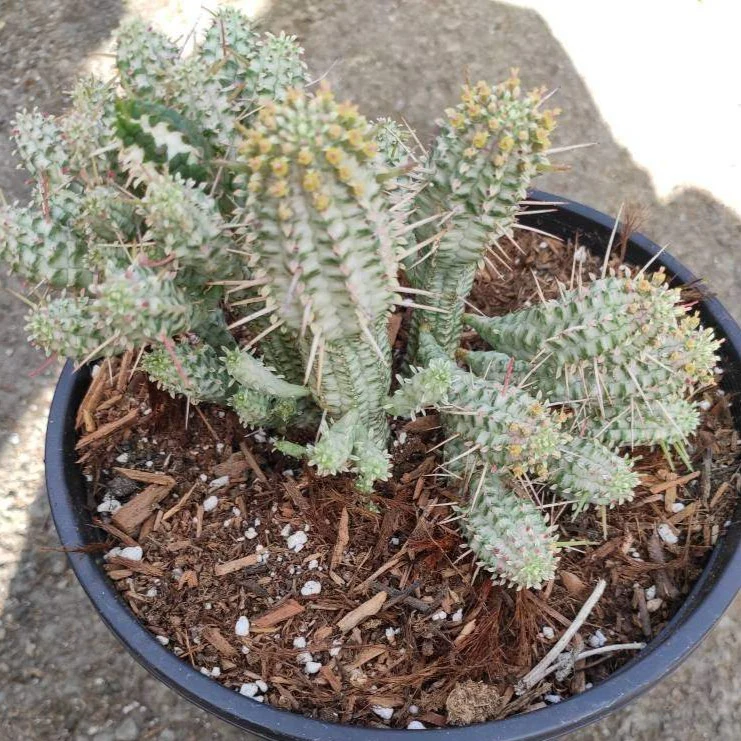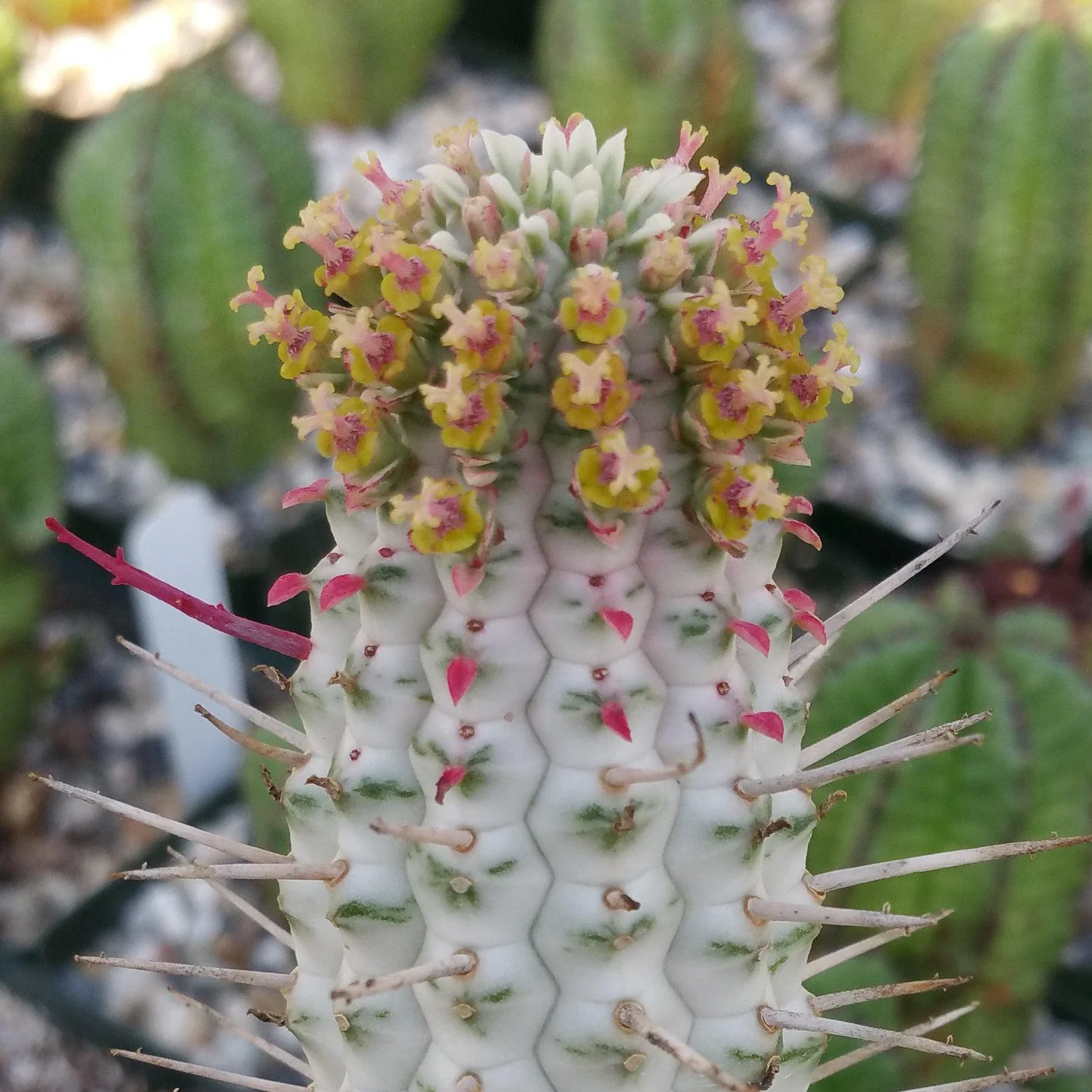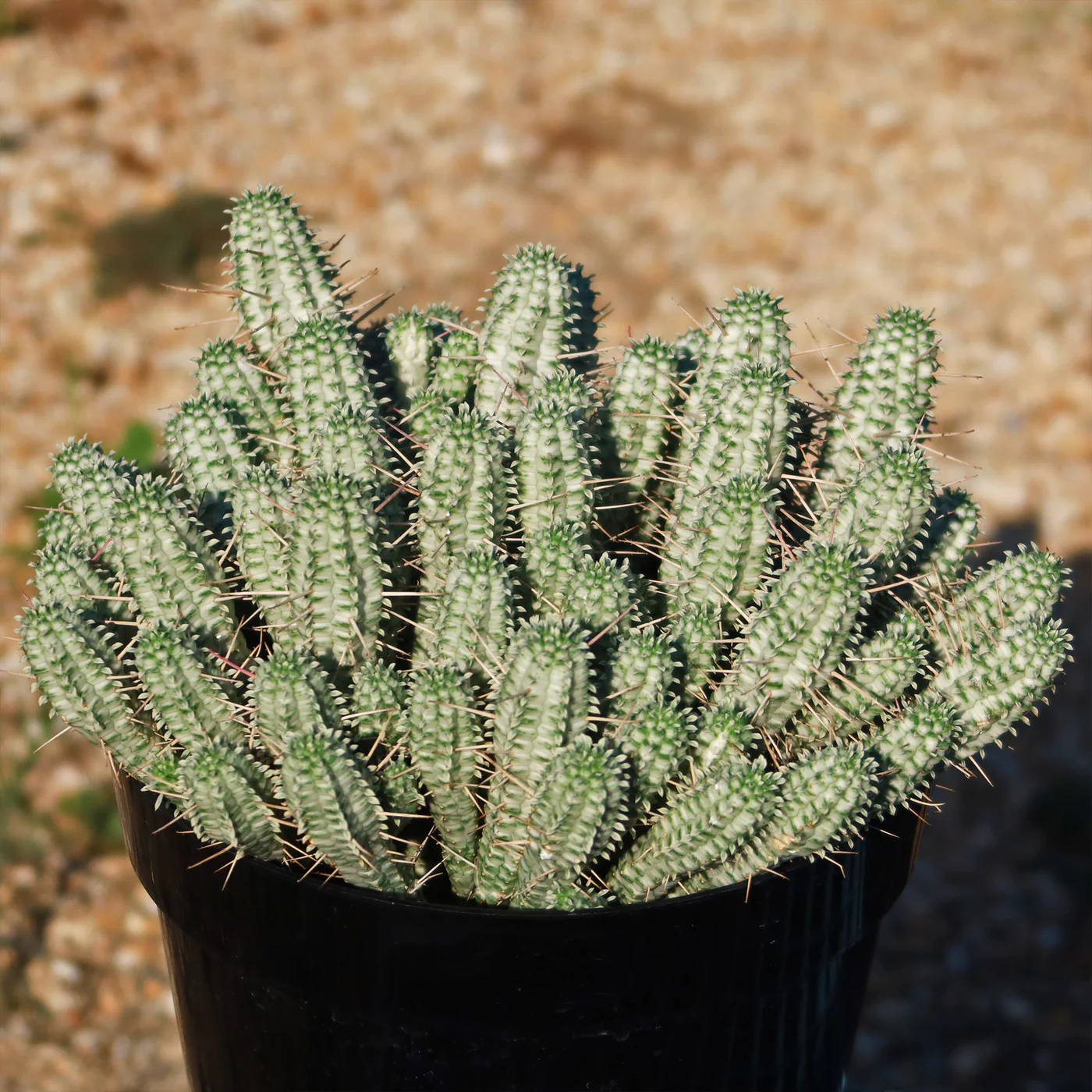HousePlantJoy is supported by our audience. When you purchase through one of our links, we may earn a small affiliate commission. As an Amazon Associate I earn from qualifying purchases. Your cost is not affected.
==================
Growing a Corn Cob Cactus has been a journey full of learning curves for me, and I’m excited to share some information with you about everything you need to know about these drought tolerant cacti. From its intriguing origins to its care requirements and beyond, we’ll uncover the mysteries behind its captivating appearance and remarkable resilience.
Whether you’re an experienced plant enthusiast or just starting, get ready to be fascinated as we delve into the story of this intriguing succulent and uncover why it has captured the hearts of succulent lovers around the globe. So, don your gardening gloves and join us on this captivating journey into the mesmerizing world of the Corn Cob Cactus!
Corn Cob Cactus: The Ultimate Guide to Everything You Need to Know
Photo by: Planet Desert
Welcome to my plant corner, where the Corn Cob Cactus shines as a unique and easy-to-care-for plant. This cactus caught my eye for its cool shape and has been a low-maintenance buddy in my home. Whether you’re new to plants or have a bunch, you might like having one.
I’ll share what I’ve learned about keeping my Corn Cob Cactus happy. I’ll also include some tips on how I fixed a few common problems. Let’s explore why the Corn Cob Cactus is a great plant friend to have around.
Key Highlights
- The Corn Cob Cactus, scientifically known as Euphorbia Mammillaris Variegata, stands out with its unique cob-like shape and variegated chalky green stems. Native to South Africa, it boasts a captivating presence that enhances any indoor plant collection.
- This plant is the perfect addition to your indoor garden, from its striking appearance to its low-maintenance nature and air-purifying abilities.
- Get creative with styling ideas for showcasing the Corn Cob Cactus in your indoor space, from vertical gardens to terrarium displays.
- Explore the optimal lighting, watering, soil, pest management, and propagating techniques to ensure the health and longevity of your Corn Cob Cactus. Adjust it seasonally.
Corn Cob Cactus Unveiled: Exploring the Enigmatic Succulent
Photo by: GardenTags
The Corn Cob Cactus, scientifically known as Euphorbia Mammillaris Variegata, is an intriguing member of the Euphorbiaceae family. This succulent is also called the Indian Corn Cob Cactus due to its resemblance to a corn cob. Native to South Africa, the Euphorbia Mammillaris Variegata features chalky green stems that grow columnar.
Its distinct appearance makes it a remarkable addition to any indoor plant assortment. The chalky green stems of the Corn Cob Cactus grow vertically, reaching a height of 8 to 10 inches.
With its interesting botanical characteristics and easy care requirements, the Corn Cob Cactus is popular among succulent enthusiasts.
Decoding the Unusual Shape of the Corn Cob Cactus
Photo by: World of Succulents
The Corn Cob Cactus, scientifically known as Euphorbia Mammillaris Variegata or corncob euphorbia, shares similarities with another plant species, Euphorbia Mammillaris. The two are often confused due to their similar plant appearance, but the Euphorbia Mammillaris Variegata stands out with its variegated chalky green stems.
This succulent belongs to the Euphorbiaceae family, which comprises a diverse group of plants known for their striking shapes and adaptability. The Corn Cob Cactus’s unique columnar growth pattern and variegated stems make it a standout species within the Euphorbia genus.
Understanding the botany behind the Corn Cob Cactus helps us appreciate its beauty and distinct characteristics that set it apart from other succulents.
Why the Corn Cob Cactus Should Be Your Next Indoor Plant
Photo by: Succulent City
Why should the Euphorbia Mammillaris Variegata be your next indoor plant, you ask? Well, it’s simple. This unique and easy-going plant can add a touch of intrigue and greenery to your space without demanding too much of your time or attention. Here’s why you’ll love having it around:
- Unique Appearance: With its distinctive, cob-like shape, the Euphorbia Mammillaris Variegata brings an interesting visual element to any room.
- Low Maintenance: If you love plants but have little time to dedicate to them, this cactus is perfect for you. It thrives on neglect, needing only occasional watering and moderate sunlight.
- Adaptable: This cactus is fine with where it lives. It can adapt to almost any indoor setting as long as it gets some light and you remember to water it (sparingly!).
- Pest Resistant: Compared to other houseplants, the Corn Cob Cactus is less prone to pests. This means you’ll have less to worry about when dealing with unwelcome visitors.
- Air Purifying: Like many indoor plants, it helps purify the air in your home, making your living space healthier and more inviting.
- Easy Propagation: Want more of them around your home or to share with friends? The Euphorbia Mammillaris Variegata is easy to propagate, giving you baby cacti with minimal effort.
- Year-Round Beauty: This cactus stays green and vibrant all year, offering consistent beauty regardless of the season.
- Mood Booster: Having plants around is known to improve mood and productivity. The Corn Cob Cactus, with its quirky appearance, can bring a smile to your face even on tough days.
So, consider the Corn Cob Cactus if you want to add a new plant to your collection. It’s not just a plant; it’s a low-maintenance friend that brightens your home and your day.
Styling with the Corn Cob Cactus
Photo by: Succulents Depot
The Euphorbia Mammillaris Variegata is a beautiful plant on its own and a versatile addition to any indoor space. Its unique form and variegated stems make it a perfect choice for creative displays and pairing with other plants. Consider these some ideas for styling with the Euphorbia Mammillaris Variegata:
Creative Display Ideas for Indoor Spaces
When it comes to displaying the Corn Cob Cactus in indoor spaces, the possibilities are endless.
- Create a vertical garden by mounting the Euphorbia Mammillaris Variegata on a wooden board or a wall-mounted plant holder.
- Place the Euphorbia Mammillaris Variegata in a hanging planter or macrame hanger to add a touch of greenery to your ceiling space.
- Arrange multiple Euphorbia Mammillaris Variegata of varying sizes and heights to craft an eye-catching arrangement on a shelf or tabletop.
- Incorporate the Corn Cob Cactus into a terrarium or glass container filled with decorative rocks and moss for an eye-catching centerpiece.
Nurturing Your Corn Cob Cactus: Essential Care Tips and Tricks
Photo by: Planet Desert
Providing the appropriate care is crucial to ensuring the Corn Cob Cactus achieves optimal growth and maintains good health. This includes providing optimal lighting conditions, meeting its watering needs, using the right soil, and protecting it from common pests.
Understanding these care requirements will help you create a thriving environment for your Euphorbia Mammillaris Variegata and enjoy its beauty for years. Let’s explore each aspect of caring for your Corn Cob Cactus in detail.
Optimal Lighting Conditions for Thriving Growth
Your Euphorbia Mammillaris Variegata loves the sun. It flourishes with at least five hours of direct sunlight each day. The perfect spot is a south-facing window where it can bask in plenty of light.
Suppose your space doesn’t get enough direct sun; bright, indirect light works, too. Just avoid dark, shaded areas to prevent your cactus from becoming leggy and losing its rich color. Proper light is key to keeping your cactus happy and healthy.
Watering Needs: Finding the Right Balance
This cactus prefers to stay dry. Let the soil dry out entirely before thoroughly watering it. Avoiding overwatering is crucial, as it can result in root rot, a prevalent problem among numerous succulents. During winter, reduce watering to align with its dormant phase. This balance ensures your cactus has enough hydration without becoming waterlogged.
Soil and Potting Essentials for a Healthy Plant
To ensure the optimal growth of your Euphorbia Mammillaris Variegata, it is important to use a well-draining soil mixture. Combining cactus potting soil mix and additional materials such as pumice or perlite can help improve drainage and prevent water retention. These materials form air pockets within the soil, facilitating excess water drainage and preventing the roots from submerging in moisture.
When repotting your Corn Cob Cactus, choose a pot with drainage holes to facilitate proper drainage further. Using the right soil and potting essentials is essential for the health and longevity of your plant.
Here’s a video about caring for corn cob cacti
By: Desert Plants of Avalon
Common Pests and Issues: Prevention and Treatment
While the Corn Cob Cactus is generally a hardy and low-maintenance plant, it can still be susceptible to common pests and issues. Mealybugs and spider mites represent the most prevalent pests that may impact the health of the Euphorbia Mammillaris Variegata.
To prevent infestations, regularly inspect your plant for signs of pests, such as cotton-like clusters or tiny webs. If you see any pests, it’s best to take care of them immediately. You can tackle pests with either organic insecticidal soap or by dabbing the affected spots with a cotton swab dipped in rubbing alcohol.
Also, don’t overwater your Euphorbia Mammillaris Variegata, as too much water can cause root rot. Providing the right care and preventative measures will help keep your Euphorbia Mammillaris Variegata healthy and pest-free.
Propagating the Corn Cob Cactus
Photo by: Easy Succulents
Step-by-Step Guide to Propagation
Propagating the Euphorbia Mammillaris Variegata through stem cuttings is a straightforward process. Here’s how you can propagate your plant successfully:
- Select a healthy stem segment of the Euphorbia Mammillaris Variegata.
- Allow the cutting to callus over for a few days to prevent rotting.
- Grab a pot and fill it up with soil that’s great at draining water. Then, make a little hole for your cutting to snugly settle into.
- Place the cutting into the hole and gently pat the soil around it to ensure it’s snugly nestled.
- Water the cutting lightly, ensuring not to oversaturate the soil.
- Find a cozy spot with plenty of natural light for your potted plant, preferably in a warm area where it can enjoy indirect sunlight.
- Monitor the cutting for root development and new growth.
- Once rooted and established, treat the new plant as you would a mature Euphorbia Mammillaris Variegata.
Propagation can be rewarding, allowing you to create new plants and expand your indoor garden. Enjoy the journey of watching your new Euphorbia Mammillaris Variegata thrive and grow.
Here’s a video about propagating Corn Cob Cactus.
By: Succulents by Vonny
Seasonal Care Guide: Keeping Your Corn Cob Cactus Thriving Year-Round
Photo by: Planet Desert
Seasonal changes require adjustments in the care routine for your Corn Cob Cactus. Here are some guidelines to help you care for your plant during summer and winter:
- Summer Care: During summer, the Euphorbia Mammillaris Variegata thrives in warm temperatures and bright sunlight. Please place it where it can receive at least five hours of direct sunlight daily. Ensure to water the plant regularly, but let the soil dry out between waterings. Also, ensure good air circulation around the plant to avoid too much moisture building up.
- Winter Care: During winter, the Corn Cob Cactus takes a bit of a nap and doesn’t need as much water or warmth. Ease up on watering and let the soil dry out between drinks. It also likes cooler spots with indirect sunlight to mimic its chill time. Keep it away from drafts or heaters—they can stress it out with sudden temperature swings.
Adjusting your care routine according to the changing seasons can provide the optimal conditions for your Corn Cob Cactus to thrive.
Understanding the Corn Cob Cactus
The Corn Cob Cactus is more than just a plant; it’s a fascinating addition to any indoor garden, bringing joy with its unique appearance and low-maintenance care. Whether you’re a seasoned plant enthusiast or just starting your green journey, this succulent will surely captivate you with its charm and resilience.
As you embark on your Corn Cob Cactus journey, remember to provide it with ample sunlight, minimal watering, well-draining soil, and occasional pest checks to ensure its health and vitality. With these simple care tips, you’ll watch your cactus flourish year-round, adding beauty and personality to your space.
Visit Houseplant Joy for a fantastic array of top-notch plants and expert guidance. Let’s brighten up your plant nook with the delightful charm of the Euphorbia Mammillaris Variegata!
Frequently Asked Questions
Can the Corn Cob Cactus Survive in Low Light Conditions?
The variegated Corn Cob Cactus requires bright light to thrive and should be placed in an area with at least five hours of direct sunlight daily. While it can handle a bit of shade, it’s best not to keep it in low-light spots, as that might cause its growth to be weak and its stems to turn pale. Instead, opt for partial shade or bright indirect light for your Corn Cob Cactus.
Is the Corn Cob Cactus Safe for Pets?
The Corn Cob Cactus isn’t safe for humans or pets—it’s toxic. Its white sap can irritate the skin and trigger allergies. To avoid mishaps, ensure your furry friends can’t get to it. If you think your pet got into it or is reacting, don’t wait—get them to the vet immediately.
Can I Grow a Corn Cob Cactus Outdoors?
The Corncob Cactus can be grown outdoors in frost-free climates and hardiness zones 9a to 11b. It requires full sun exposure and well-draining soil. Protect the plant from hard frost and extreme temperatures. If you live in a colder climate, growing the Corn Cob Cactus indoors or in containers that can be brought indoors during winter is recommended.


